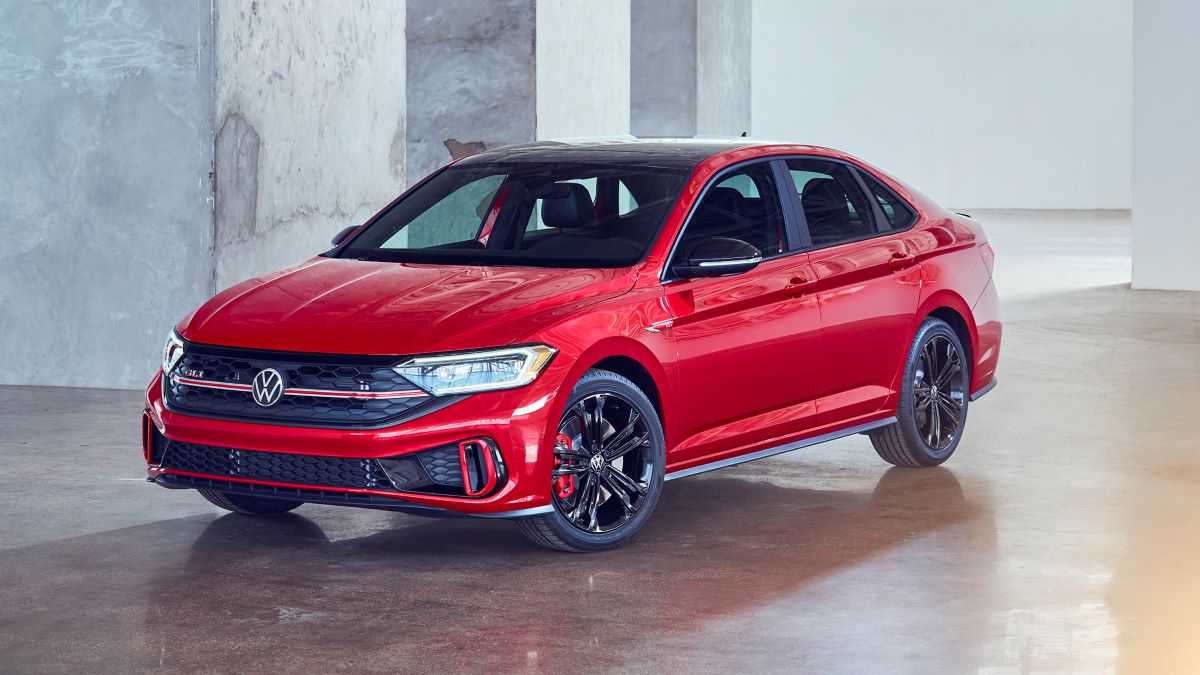The daily grind of commuting puts vehicles through a unique kind of punishment. From endless stop-and-go traffic to cold morning starts, bumper-to-bumper highway stress, and thousands of repetitive miles each year, not all cars are cut out for the task.
For many drivers, the commute becomes the most demanding part of vehicle ownership—highlighting a car’s strengths or exposing its flaws in brutal detail.
That’s why the commuter car you choose matters. Some vehicles seem to thrive under routine pressure. They start every morning without complaint, shrug off high mileage, and keep maintenance costs low.
These cars are the true champions of the weekday battle, and owners often report getting 200,000 miles or more without major headaches.
But then there are the others—cars that look good on paper but break down under the weight of daily use.
These vehicles may suffer from poor reliability, high running costs, or designs that simply aren’t suited for constant wear. What starts as a minor inconvenience quickly becomes a money-draining nightmare.
In this feature, we’ll spotlight five commuter cars that just don’t quit, followed by five that fall apart too fast. Whether you’re racking up highway miles or crawling through rush-hour traffic, this guide will help you choose wisely.
Also Read: 5 Sedans With the Best Key Fob Range and 5 That Fail At Distance
5 Commuter Cars That Refuse to Quit
Commuter cars are rarely flashy, but they play a crucial role in our daily lives. They’re the vehicles that brave freezing mornings, survive coffee spills, endure bumper-to-bumper traffic, and keep moving through endless miles of routine.
And while some cars begin to rattle and groan under that pressure, others seem purpose-built for the daily grind—quietly clocking hundreds of thousands of miles without complaint.
So what makes a great commuter car? It starts with unshakable reliability. These are cars that start every day without drama, resist wear-and-tear better than their rivals, and can handle high mileage with basic maintenance.
They also tend to have low operating costs—think long-lasting brakes, affordable tires, and engines that sip fuel rather than guzzle it.
Comfort and ride quality matter too. After all, spending 45 minutes in traffic is a lot easier when the cabin is quiet, the seats are supportive, and the infotainment system actually works.
The commuter cars on this list aren’t necessarily exciting, but that’s exactly the point. They’re vehicles you don’t have to think about, because they simply work. They age well, cost little to own, and can be trusted whether you’re stuck in rush hour or racing the clock to make your train.
We’re highlighting these five commuter champions because they offer peace of mind—a rare quality in a world where so many cars chase style over substance.
If you’re looking for a long-term daily driver that won’t drain your wallet or your patience, these vehicles are as dependable as they come.
1. 2012–2017 Toyota Corolla
If there’s a single car that defines bulletproof commuting, it’s the 2012–2017 Toyota Corolla. Known more for its reliability than personality, this generation of Corolla doesn’t try to wow with flashy features or sporty handling.
Instead, it quietly delivers outstanding durability, low running costs, and minimal maintenance headaches—all traits that make it a legend among daily drivers.
Powered by Toyota’s 1.8L 4-cylinder engine (2ZR-FE), this Corolla generation offers excellent fuel economy, typically 30–35 mpg combined, while requiring little more than oil changes, occasional spark plugs, and brake pads.
The engine is simple, proven, and known to exceed 250,000 miles with basic upkeep. Transmission choices include a 4-speed automatic or CVT (from 2014 onward), both of which are generally dependable if serviced on schedule.
The Corolla’s interior isn’t luxurious, but it’s tough. The plastics don’t crack, the upholstery holds up over time, and even after a decade, the controls still function as intended.
The climate control system is effective, and base models keep things simple—which is part of why they last. Fewer complex features mean fewer things to break.
Ride quality is another strong suit. While the Corolla isn’t sporty, it’s comfortable and composed, especially on rough roads. The steering is light (great for city traffic), and its compact footprint makes parking a breeze.
The cabin is surprisingly quiet for an economy sedan, and visibility is excellent—traits commuters appreciate when driving daily in dense traffic or tight parking lots.
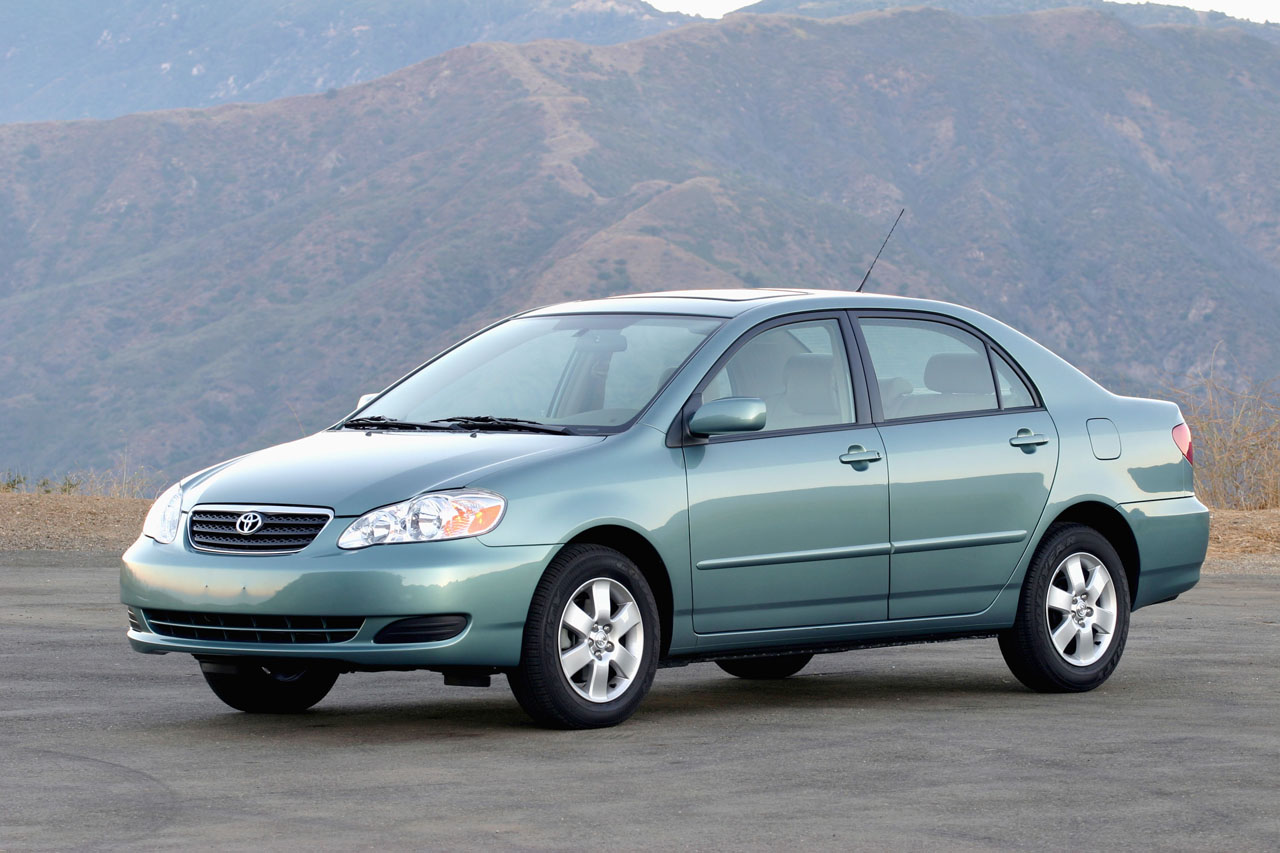
What truly makes this Corolla stand out is how well it handles neglect. Miss an oil change? It won’t punish you right away. Skip a few maintenance intervals? It usually forgives. It’s the kind of car that just keeps going, even when its owner forgets to treat it like a priority.
We’re including the 2012–2017 Corolla because it’s the kind of car that outlasts jobs, commutes, and even some owners.
Whether it’s the first car in the family or a long-time backup, it delivers exactly what a commuter car should: dependability without drama.
For anyone clocking miles every day, this Corolla is a stress-free companion that’s built to last well beyond the 9-to-5.
Also Read: Top 10 Most Reliable Used Cars You Can Buy for Under $10,000 in 2025
2. 2010–2015 Honda Civic (8th & 9th Generation)
For millions of drivers, the Honda Civic has been the go-to commuter for decades—and the 2010–2015 models continue that tradition with unbeatable reliability, low operating costs, and surprising versatility.
Whether you’re grinding out highway miles or crawling through urban traffic, the Civic is a car that keeps its cool under pressure, and more importantly, keeps running.
The 1.8L SOHC i-VTEC 4-cylinder engine found in most Civics of this era is incredibly durable. Known for its fuel efficiency and long-term dependability, it routinely reaches 250,000+ miles with only basic maintenance.
The 5-speed automatic and 5-speed manual transmissions available during this run are also rock-solid—smooth, easy to service, and rarely problematic if fluid changes are performed.
The Civic is also a commuter’s friend when it comes to ride and handling. It’s nimble enough for tight city driving but stable on the highway, and the suspension strikes a balance between comfort and control.
The steering is light but precise, and parking in cramped lots is effortless. Plus, fuel economy is excellent, with most trims achieving 30–40 mpg depending on driving habits and conditions.
Inside, the Civic may not feel fancy, but everything works—often for years without issue. The dashboard layout is simple and user-friendly, seats are firm but comfortable for long stints, and the materials hold up well to repeated use.

The cabin is well-insulated for a car in this class, keeping road and engine noise manageable even during highway slogs.
Another key point in its favor is affordability—both upfront and over time. Parts are cheap and widely available, independent mechanics know the platform inside and out, and even repairs like suspension work or brake jobs rarely break the bank.
You’ll also find that resale values remain strong, thanks to the Civic’s well-earned reputation for longevity.
We’re including the 2010–2015 Honda Civic because it checks every box a commuter needs: it’s reliable, affordable, efficient, and easy to live with.
More than just a car that gets you to work, the Civic is a partner in your daily grind—a durable machine that keeps showing up, no matter the miles or the weather.
3. 2009–2014 Hyundai Elantra
The 2009–2014 Hyundai Elantra might not be the first name that comes to mind when you think of ultra-reliable commuters, but this generation helped transform Hyundai’s reputation.
Built with simplicity, efficiency, and practicality in mind, the Elantra delivers consistent, no-fuss daily driving—often for far longer than buyers expect.
Under the hood, most Elantras from this era use the 1.8L Nu 4-cylinder engine, which delivers solid fuel economy (28–38 mpg combined depending on trim) and respectable performance for a commuter.
More importantly, it’s a relatively simple, naturally aspirated engine that—despite a few early teething issues—proves durable with regular oil changes and scheduled maintenance.
Paired with a conventional 6-speed automatic or manual transmission, these powertrains typically sail well past 150,000–200,000 miles without major drama.
The Elantra’s real secret weapon is its value-to-durability ratio. It was one of the first compacts to offer heated seats, Bluetooth, and stylish design without inflating the price. And while interior materials aren’t luxury-grade, they’ve aged well.
Dashboards don’t crack, buttons rarely fail, and fabric seats tend to hold up after years of daily use.
The ride quality is tuned more for comfort than excitement—perfect for highway commuters and city dwellers alike. It soaks up rough pavement nicely, and the compact size makes it easy to navigate tight parking spaces and crowded roads.
Even at higher mileage, most Elantras retain their composure and deliver a pleasant, quiet ride that belies their economy-car pricing.
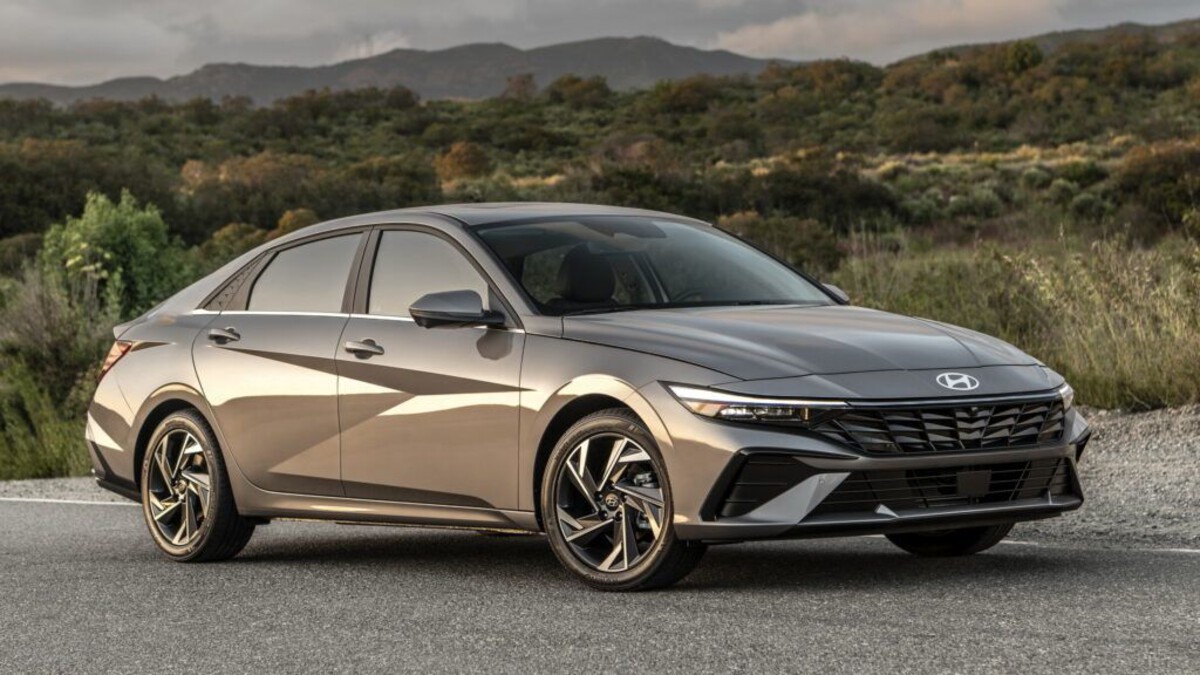
Perhaps most important of all, Elantras are inexpensive to maintain and repair. Parts are readily available, and labor costs tend to be lower than with some Japanese or European competitors. For budget-conscious drivers who want a dependable ride without high upkeep, the Elantra stands out.
We’re including the 2009–2014 Elantra because it represents the working-class commuter done right. It doesn’t crave attention or make big promises—it just shows up, day after day, mile after mile.
For those who value economy and endurance in equal measure, this Elantra quietly delivers more than expected—and lasts long after the car payment ends.
Also Read: Top 12 Cars That Run Like New Even After 15 Years With Minimal Maintenance
4. 2008–2012 Ford Fusion (2.5L I4 Models)
The 2008–2012 Ford Fusion is often overlooked in conversations about long-term reliability, but it quietly built a reputation as one of the most dependable midsize sedans of its era—especially in models equipped with the naturally aspirated 2.5L Duratec 4-cylinder engine.
While its styling was conservative and its tech modest by today’s standards, the Fusion’s mechanical simplicity and bulletproof drivetrain made it a standout for commuters who simply wanted a car that worked.
The 2.5L I4 engine, paired with a 6-speed automatic transmission, delivers decent power, good fuel economy (around 23–33 mpg depending on driving conditions), and an ownership experience almost completely free of drama.
It doesn’t have a turbo to fail, a CVT to overheat, or direct injection to clog things up. It’s low-tech in the best way—and that’s a major advantage for long-term use.
On the road, the Fusion strikes a great balance between comfort and control. It’s more engaging than many commuter cars in this price bracket, yet still soft enough to soak up potholes and rough pavement during long city drives or highway runs.
Road noise is well controlled, and the cabin—while not fancy—is durable and spacious enough for daily duties.
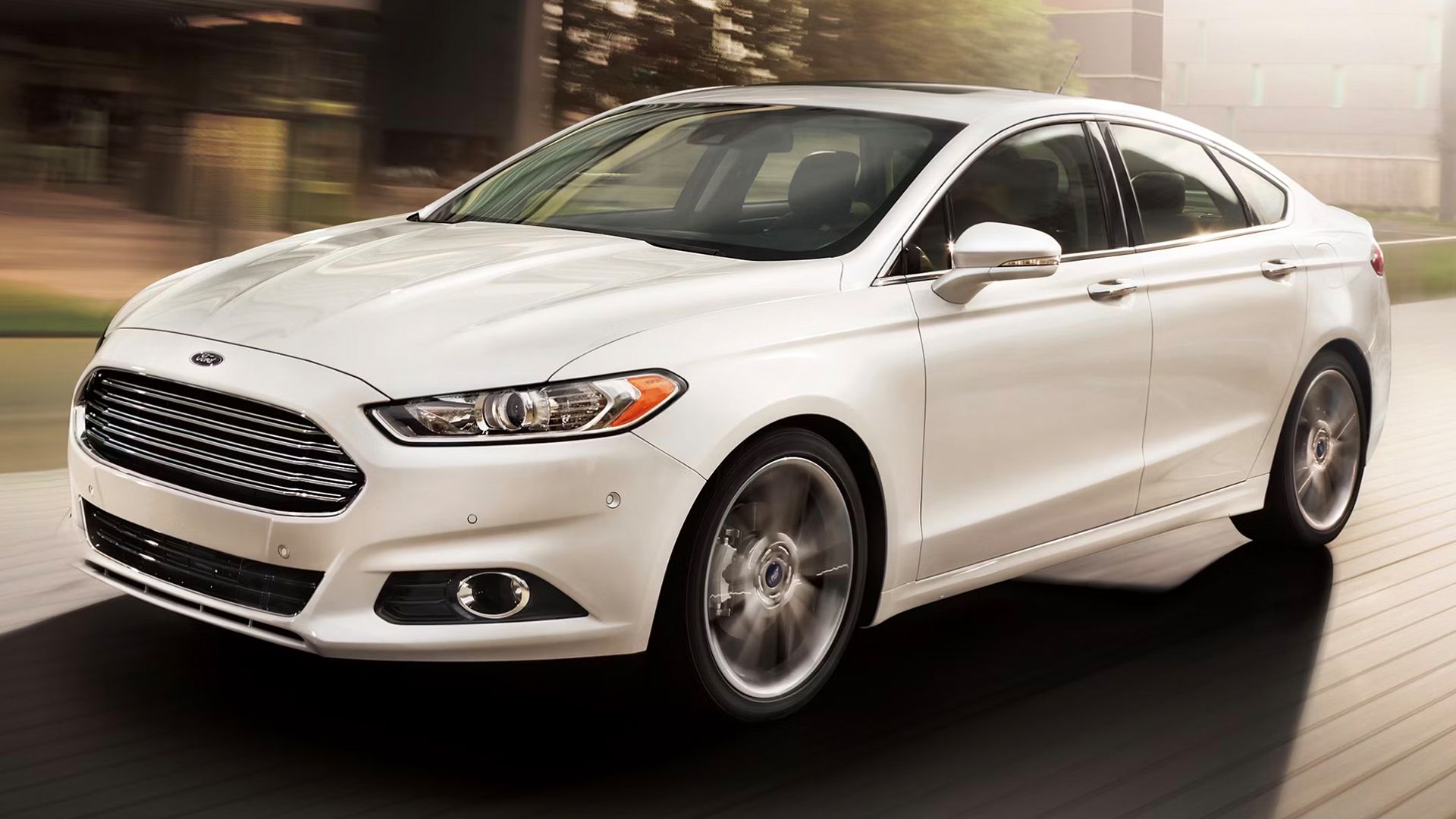
Interior features like Bluetooth, SYNC voice commands, and available heated seats added some convenience for the time, but the real appeal here is how well everything continues to function after 10+ years.
Buttons, knobs, and climate systems hold up nicely. Even the paint and seat materials tend to age better than many rivals from the same era.
Best of all, the Fusion is affordable to maintain and repair. Parts are cheap and plentiful, and nearly every independent shop in North America knows how to service it. Suspension components, brakes, sensors—everything is designed to be accessible and easy to replace.
We’re including the 2008–2012 Fusion because it’s the perfect commuter sleeper: a no-nonsense sedan that quietly racks up the miles without demanding much in return.
If you can find one with a clean history and regular maintenance, it’s likely to keep going for years—long after trendier cars have called it quits.
5. 2011–2016 Chevrolet Cruze (1.8L NA Models)
The 2011–2016 Chevrolet Cruze had its share of growing pains—mostly with the turbocharged 1.4L models—but if you choose the base 1.8L naturally aspirated version, you’re getting a surprisingly reliable and durable commuter.
While not flashy or fast, this simpler configuration of the Cruze has proven itself as a low-cost, low-maintenance daily driver that can quietly soak up hundreds of thousands of miles.
The 1.8L Ecotec engine, paired with a 6-speed automatic or manual transmission, is the key to its longevity. Free from the turbocharger issues and cooling system gremlins of its 1.4L sibling, the 1.8L avoids over-engineering in favor of straightforward reliability.
Oil changes, spark plugs, and basic upkeep are all that’s typically needed to keep this engine humming past the 200,000-mile mark.
Fuel economy is solid too—hovering in the 26–36 mpg range depending on your commute style—while the ride is composed and quiet for a compact sedan.
The Cruze also impresses with its comfortable front seats and insulated cabin, making longer commutes less fatiguing. Road and wind noise are well managed, and handling is stable even at highway speeds.
The interior is where the Cruze punches above its class. Even in base models, build quality is respectable.
The dashboard layout is intuitive, materials feel more upscale than rivals in the same price bracket, and tech like Bluetooth, USB ports, and steering wheel controls are often included.
The trunk is generously sized, and overall practicality is solid for commuters who need space for bags, gear, or groceries.
Maintenance costs are pleasantly low. Brake jobs, filters, belts, and suspension components are inexpensive and widely available.
While some GM models of this era had quality concerns, the 1.8L Cruze has become a standout for those who want simplicity and endurance—with far fewer of the headaches experienced by turbo or eco-focused alternatives.
We’re including the 1.8L Cruze here because it’s a hidden gem in the used commuter world. Find one with a clean history and service records, and it will serve you faithfully through countless commutes—without the drama, and without the premium price tag.
5 That Hate Daily Use
Not every car is cut out for the daily grind. Some vehicles may look sharp, offer impressive features, or even drive well in short bursts—but when subjected to the repetitive wear of daily commuting, they fall apart faster than expected.
Whether it’s fragile transmissions, fussy electronics, poor build quality, or costly maintenance, these sedans and compacts simply aren’t designed to handle consistent, high-mileage use.
The stress of a commuter’s life is relentless: cold starts every morning, heat-soaked traffic in the afternoon, short trips that don’t let engines fully warm up, pothole-ridden city roads, and the never-ending stop-and-go rhythm that wears out brakes, suspension parts, and transmissions.
A good commuter car needs to thrive in these conditions. Sadly, the cars in this list routinely fail to meet that challenge.
We’re not talking about one-off lemons here. These are models with a pattern of widespread reliability issues, confirmed by mechanic reports, long-term owner experiences, and recall or service bulletin histories.
In many cases, they perform well early on, but their quality unravels right around the time daily drivers rely on them most—right after the warranty runs out.
This list isn’t about nitpicking luxury brands or high-performance machines—it’s about spotlighting cars marketed to everyday people that just don’t hold up to real-world commuter demands.
These vehicles can quickly become money pits, stranding owners with breakdowns, electrical failures, or mechanical overhauls that far exceed their value.
We’re writing about these five vehicles not to shame automakers but to help drivers avoid choices that will hurt them in the long run.
If you’re putting serious miles on your car every week, these are the models you should think twice about before relying on them for your daily livelihood.
1. 2012–2016 Ford Focus (with PowerShift Transmission)
The 2012–2016 Ford Focus had all the ingredients of a great commuter car on paper: compact size, decent fuel economy, sharp styling, and an affordable price tag. At launch, it was praised for its fun-to-drive nature and European-inspired chassis tuning.
But for many owners, especially those who commuted daily, this Focus quickly turned into a nightmare—primarily due to its flawed PowerShift automatic transmission.
Marketed as a fuel-efficient dual-clutch system, the PowerShift gearbox was supposed to combine the best of manual and automatic worlds. Instead, it suffered from jerky shifts, slipping, hesitation, clutch shudder, and premature failure.
Commuters bore the brunt of the design flaws, as the constant stop-and-go traffic revealed the worst behavior: the car would lurch at low speeds, struggle to engage gears smoothly, and sometimes feel like it was about to stall.
These issues weren’t rare. They were widespread and well-documented—so much so that Ford faced multiple lawsuits and eventually extended transmission warranties.
But even then, many drivers found themselves dealing with repeat repairs, costly out-of-pocket fixes once the coverage lapsed, and major drivability concerns that eroded confidence in the vehicle.
Daily use also exposed the car’s fragile interior materials and glitchy electronics. Touch-sensitive buttons, infotainment systems, and climate controls frequently failed or degraded prematurely.
Seat fabric wore thin, door latches sometimes malfunctioned, and electrical gremlins (like warning lights or sensor failures) became frustratingly common.
On top of that, the compact engine struggled under heavy commuter cycles. The 1.0L and 2.0L engines, though efficient, weren’t particularly durable under long-term strain, especially when paired with the flawed transmission.
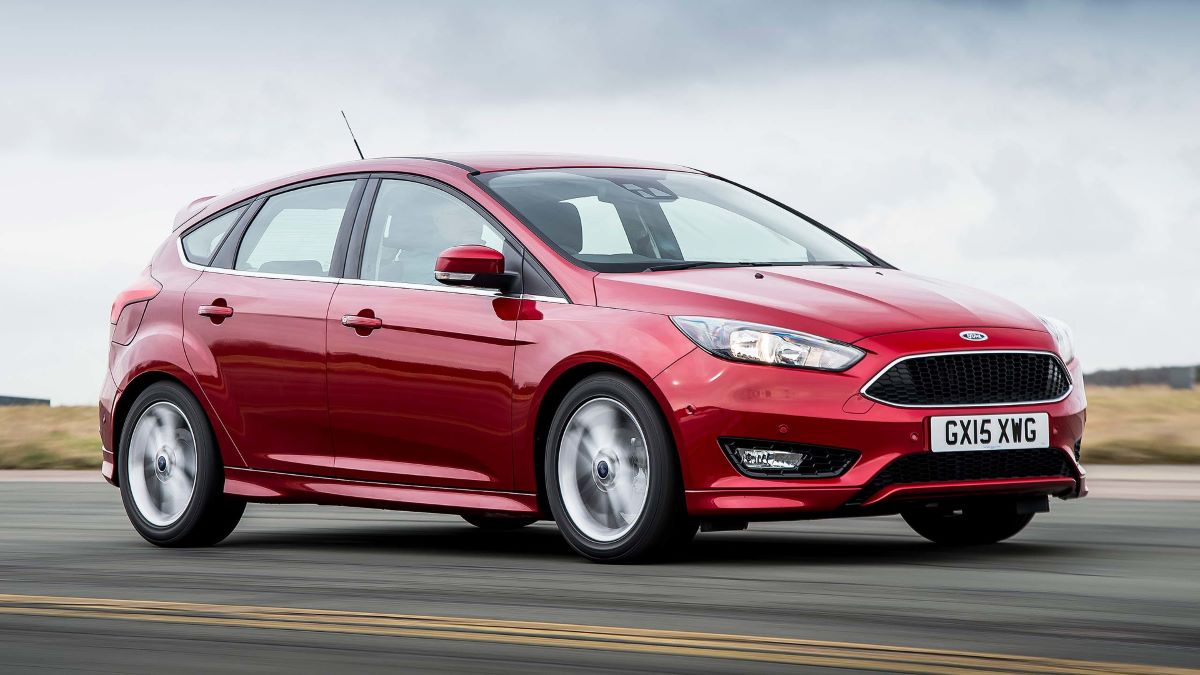
Brake and suspension components wore out faster than expected, and overall maintenance costs began to climb around the 60,000–80,000 mile mark—right when many commuters expect their car to still feel solid.
We’re including the 2012–2016 Ford Focus in this list because it’s the textbook example of a car that couldn’t survive what it was built for.
For daily drivers who depend on consistent, low-drama transportation, this Focus became a rolling headache. It looked like a smart buy—until it was used the way real commuters use their cars.
2. 2011–2015 Chevrolet Malibu (2.4L eAssist Models)
The 2011–2015 Chevrolet Malibu, particularly the 2.4L eAssist mild-hybrid variant, aimed to blend fuel efficiency with midsize comfort—a tempting combo for the daily commuter.
On paper, it delivered improved MPG thanks to a battery-assisted start-stop system, regenerative braking, and a small electric motor.
But in practice, this Malibu became a maintenance nightmare for daily users, with frequent issues cropping up just when owners needed dependability most.
The heart of the problem lies in the complexity of the eAssist system. Unlike full hybrids, it doesn’t offer much electric-only driving, yet it introduces extra components—like a lithium-ion battery, electric motor-generator, and unique control modules—that add cost, complexity, and failure points.
The battery cooling fans fail, the motor-generator wears prematurely, and even software glitches can disable the system entirely. What’s worse, parts are expensive and less commonly stocked, meaning longer repair wait times.
The 2.4L Ecotec engine, shared with other GM vehicles, also has a history of oil consumption, timing chain wear, and overheating—especially in high-mileage, high-traffic environments.
Combine that with a heavy commuter load, and many owners find themselves facing head gasket failures, sensor malfunctions, or check-engine lights far sooner than expected.
Then there’s the driving experience. While not uncomfortable, the eAssist system doesn’t handle stop-and-go traffic smoothly.
The auto start-stop feature can feel abrupt or slow to respond, and early-model programming wasn’t refined enough for smooth operation in urban commutes.
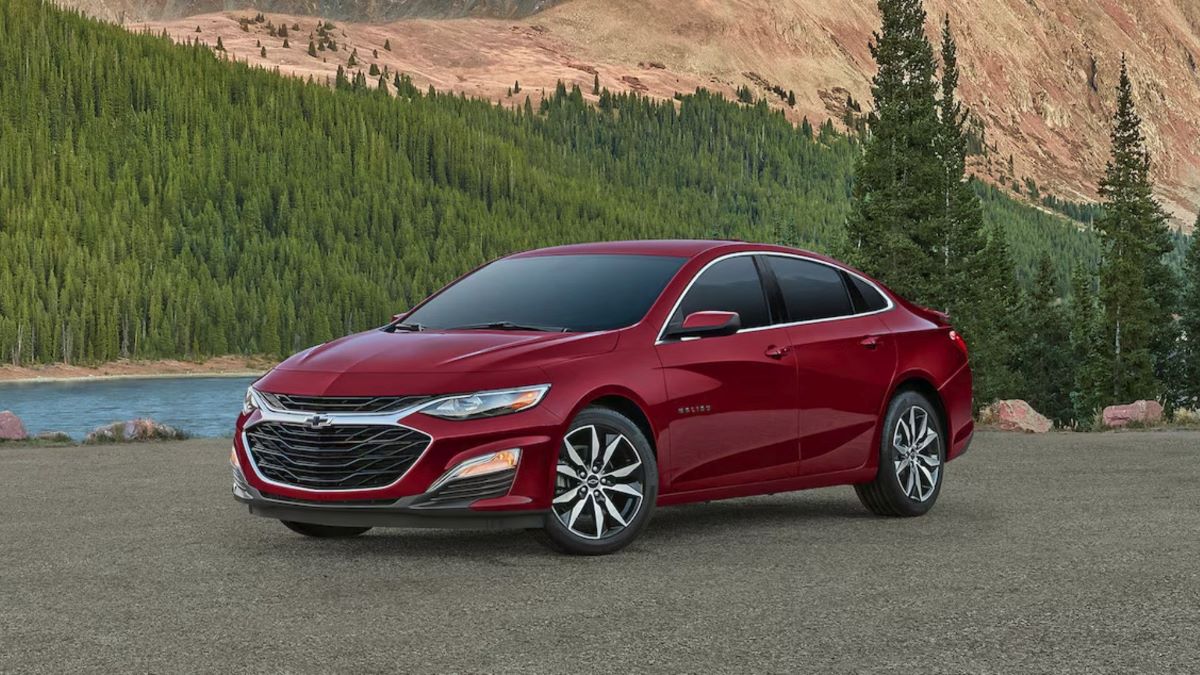
Pair that with a sluggish transmission and a hefty curb weight, and this Malibu often feels underpowered when it’s most needed—like merging onto busy highways.
Interior quality also declined with time. The dash materials, while stylish initially, faded or cracked under sun exposure, and the MyLink infotainment system was prone to glitches or full-on failures. Cabin rattles became common, and rear-seat comfort suffered compared to rivals.
We’re including the 2011–2015 Malibu eAssist because it represents a well-intentioned commuter option that wasn’t built to handle the very conditions it was sold for.
What seemed like a smart, fuel-efficient buy ended up being a costly, high-maintenance hybrid compromise that couldn’t stand up to the repetitive demands of daily driving.
3. 2013–2017 Nissan Sentra (CVT Models)
The 2013–2017 Nissan Sentra was designed to be a commuter’s best friend: compact, fuel-efficient, and budget-friendly. It checked the right boxes for many buyers—good gas mileage, spacious interior for its class, and a low price tag.
But despite its promising start, this generation Sentra has become known for one major flaw that makes it a poor choice for daily use: its continuously variable transmission (CVT).
Nissan’s CVTs from this era were plagued with reliability issues. In the Sentra, they were especially problematic.
Commuters—those who subject their cars to daily city congestion or long highway slogs—often experienced jerking, hesitation, delayed acceleration, and even complete transmission failure, sometimes before hitting 75,000 miles.
And while Nissan extended its CVT warranty to 10 years/120,000 miles for some vehicles, countless drivers were still left footing expensive repair bills due to limited coverage and repeated failures.
Beyond the transmission woes, the Sentra’s overall build quality suffers under daily abuse. Cabin materials wear quickly, with fading dashboards, rattling panels, and tearing upholstery being common complaints.
Electronics such as the infotainment system, backup camera, and power windows can become glitchy or unresponsive after a few years of hard use.
Performance is another area where the Sentra fails to deliver for commuters. The underpowered 1.8L engine, paired with the CVT, feels sluggish under acceleration—particularly when merging or passing at highway speeds.
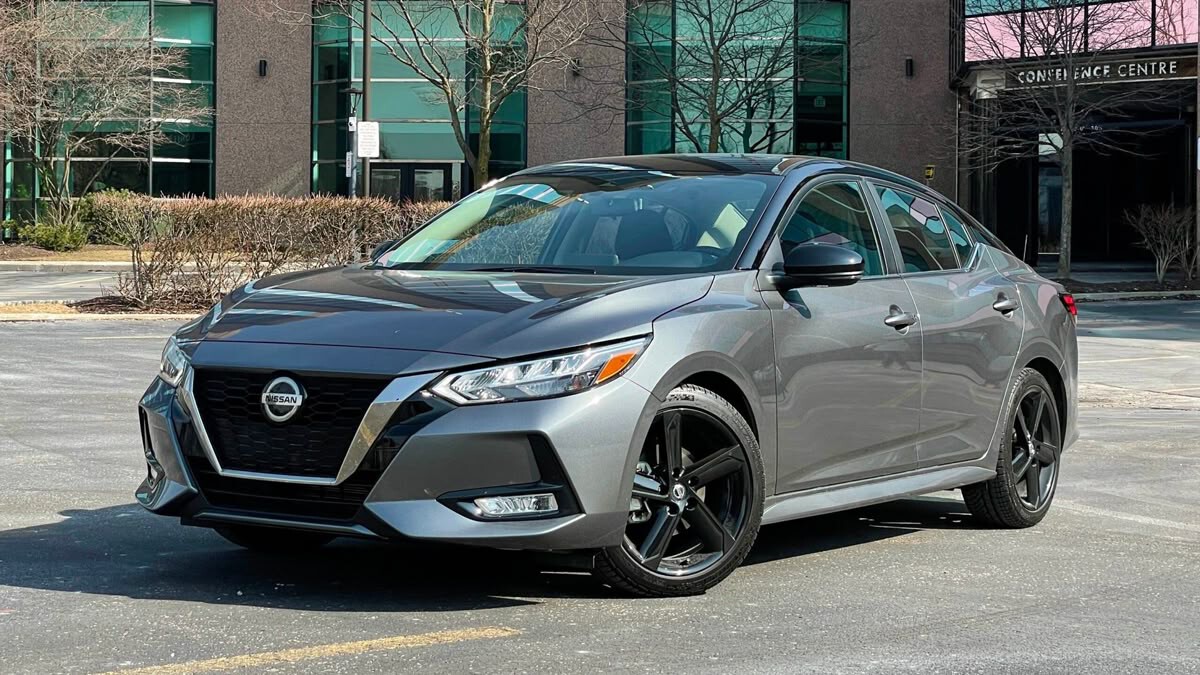
It doesn’t respond well to stop-and-go traffic either, often feeling unrefined or strained. Suspension components wear out quicker than rivals, leading to premature tire cupping and degraded ride quality.
While the Sentra’s initial purchase price is attractive, it becomes a money pit once out of warranty.
The cost of replacing or repairing a CVT can exceed the car’s value, and repeated problems discourage long-term ownership. It’s no surprise that resale values have plummeted for this generation.
We’re including the 2013–2017 Sentra because it’s a classic example of a car that wasn’t built to endure daily demands.
It may save you money up front, but if you rely on your vehicle for dependable commuting, the Sentra could end up leaving you stranded—and emptying your wallet.
4. 2012–2015 Dodge Dart
The 2012–2015 Dodge Dart marked Chrysler’s return to the compact car segment after years of absence, boasting Alfa Romeo underpinnings, bold styling, and a wide array of trims and tech.
On launch, it seemed like a competitive alternative to the Civic and Corolla, with available turbo engines, a spacious cabin, and customizable features.
But in the real world—especially for commuters—the Dart turned out to be a high-maintenance disappointment that couldn’t handle daily use.
One of the Dart’s biggest pitfalls was its powertrain options, particularly the 1.4L turbocharged MultiAir engine paired with the dual dry-clutch transmission (DDCT).
While this setup looked great on paper—offering solid fuel economy and sporty performance—it proved unreliable and frustrating in everyday driving.
The DDCT behaved unpredictably in stop-and-go traffic, often shuddering, jerking, or delaying engagement. The clutch packs wore prematurely, and repairs weren’t cheap.
The turbo engine also suffered from oil leaks, carbon buildup, and weak long-term durability, especially under the stress of daily driving.
Even the more conventional 2.0L and 2.4L engines weren’t free from trouble. They experienced rough idling, electronic throttle control issues, and misfires that led to check-engine lights and repeated dealership visits.
Reliability ratings for the Dart declined rapidly, and many owners reported significant problems shortly after the factory warranty ended.
Inside, the Dart looked good but aged quickly under constant use. Touchscreens froze, HVAC knobs broke, and interior materials—especially seat fabrics and dash trim—wore poorly. Even the door panels and armrests showed premature cracking in high-mileage units.
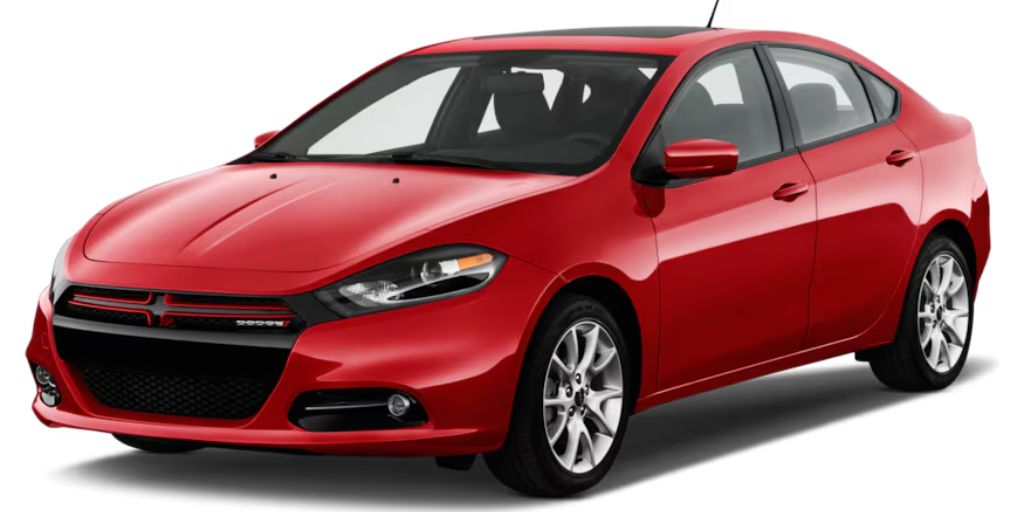
The Dart also lacked the kind of suspension robustness that a daily commuter demands. Bushings, sway bars, and struts often wore out early, leading to clunking noises, alignment issues, and uneven tire wear—all problems that multiply fast when you’re putting in 50+ miles a day.
We’re including the Dodge Dart because it’s a car that overpromised and underdelivered, especially for commuters.
While it might have worked fine for occasional use, daily drivers quickly learned that it wasn’t up to the task of long-term, high-frequency commuting. The Dart was discontinued by 2016—an unspoken admission that it simply wasn’t built to last.
5. 2015–2019 Volkswagen Jetta (1.4T & 1.8T Gas Models)
The 2015–2019 Volkswagen Jetta attracted many commuters with its European feel, solid road manners, and sleek, conservative styling. It offered good fuel economy, a comfortable ride, and a cabin that felt more upscale than most in its price range.
But for all its surface-level strengths, the Jetta’s long-term ownership—especially under the stress of a daily commute—revealed some serious weaknesses that make it a high-risk choice for frequent drivers.
The Jetta’s most common commuter variants—the 1.4L and 1.8L turbocharged gas engines—seemed like a step forward in power and efficiency.
Unfortunately, both are known to suffer from carbon buildup in intake valves, cooling system failures, and turbocharger reliability issues as mileage climbs.
These problems are expensive to address and tend to surface right as the warranty expires. On top of that, timing chain tensioner failures have been reported across several VW engines in this range, potentially leading to catastrophic engine damage.
The transmissions (both the 6-speed automatic and dual-clutch DSG in some trims) also become less smooth with age, especially in congested, stop-and-go traffic—exactly the environment many commuters face every day.
The DSG requires fluid changes every 40,000 miles and becomes a source of high repair costs if neglected even slightly.
Interior quality, while initially impressive, ages poorly with hard use. Buttons wear out, infotainment glitches become common, and plastic trim tends to rattle or peel under long-term sun exposure and daily wear.
Electric components like window switches, trunk latches, and sensors also begin to fail with frustrating frequency, and the cost to diagnose and repair even minor issues often exceeds that of Japanese or American rivals.
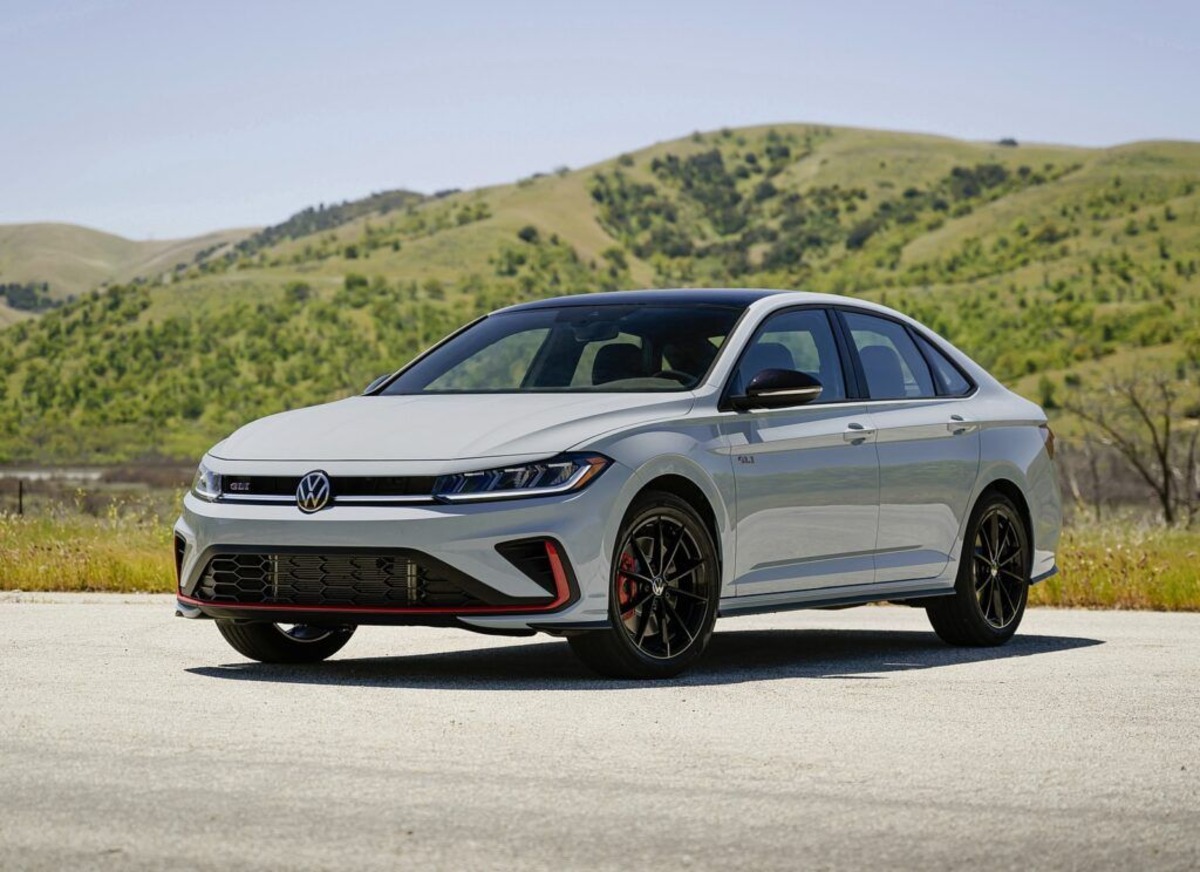
What ultimately hurts the Jetta most for commuters is the cost-to-durability ratio. It may feel more refined during a test drive, but those premium vibes don’t hold up over time. Repairs are costly, maintenance intervals are strict, and the car is less forgiving of neglect or high-mileage use.
We’re including the 2015–2019 Jetta because it’s a perfect example of a car that appears commuter-friendly—but under daily pressure, becomes expensive, fragile, and far too complicated to trust. For drivers who need worry-free transportation, this Jetta is more burden than bargain.
Commuting might seem mundane, but it’s one of the toughest endurance tests a car can face.
The repetition of short trips, long idles, heavy traffic, and high-mileage use exposes every mechanical flaw, weak component, and corner-cutting decision made during a car’s design and production.
That’s why the difference between a great commuter car and a bad one isn’t just about comfort or features—it’s about long-term trustworthiness.
The vehicles on our “Refuse to Quit” list—like the Toyota Corolla, Honda Civic, Hyundai Elantra, Ford Fusion, and base-model Chevy Cruze—earned their reputation through years of consistent, reliable service.
They’re not glamorous, but they’re dependable. They show up every morning, shrug off abuse, and ask for little in return. For daily drivers who rely on their vehicles to earn a living, get to school, or simply stay on schedule, these cars pay dividends in peace of mind.
On the flip side, the models in our “Hate Daily Use” category—such as the Ford Focus (PowerShift), Chevy Malibu eAssist, Nissan Sentra (CVT), Dodge Dart, and Volkswagen Jetta (turbo gas)—look appealing at first glance.
Some even feel more refined or tech-savvy. But once the miles start piling up, they reveal a pattern of costly failures and reliability gaps that make daily driving a stressful, unpredictable experience.
Worse still, their issues often appear just after warranties expire—turning affordable cars into financial traps.
The lesson here is clear: when it comes to choosing a daily commuter, reputation, reliability history, and mechanical simplicity matter more than style or specs.
A dependable commuter is an unsung hero of your daily routine. It should disappear into the background, not dominate your schedule with repair shop visits.
Choose wisely, and your car will be the most boring thing in your life—which, when it comes to commuting, is exactly what you want.
Also Read: 5 Trucks With the Best Storage Under Seats and 5 Wasting Space

